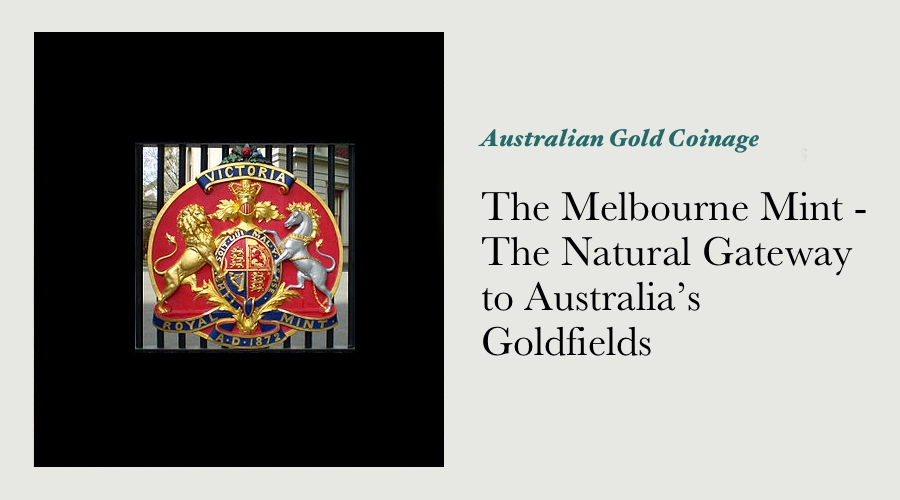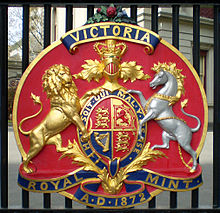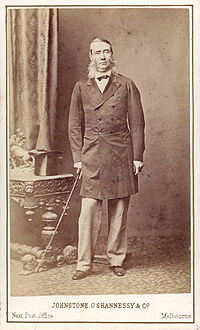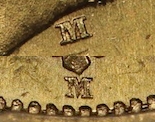The Melbourne Mint - The Natural Gateway to Australia’s Goldfields

Although a mint was not established in Victoria until 1872, as early as the 1850s the Victorian Government and business community lobbied the various decision makers in London for the first overseas branch of the Royal Mint to be located in Melbourne. Although historians have recorded rivalry between New South Wales and Victoria before this issue arose, the location of Australia’s first official mint was a further cause for competition between the two colonies for several decades.
In some respects, the Victorians were perhaps justified in believing that Melbourne would have been a far more appropriate location than Sydney – the volume of gold exported from the Victorian goldfields between 1851 and 1865 was close to five times that exported from New South Wales.[i]
Furthermore, Melbourne was regarded by many as “the natural gateway to Australia’s goldfields”.[ii]

While Sydney faces the Pacific Ocean and the United States, Melbourne was located directly in line with the main shipping route from Europe to Australia and was considered by some to be around 1000 miles closer to Europe than Sydney. Its relative proximity to the Victorian goldfields and ease of access to the Murray–Darling river system were further advantages.
One of the key initial reasons that Sydney was chosen rather than Melbourne was that the British Colonial Secretary, Earl Henry Grey, had given tacit approval to the establishment of a mint in Sydney on 20 February 1852.
Although gold had been discovered at Mount Alexander, Bendigo and Ballarat in July, August and October of 1851 respectively, this news had not reached London until around the time of Grey’s approval. Certainly, the richness of the Victorian goldfields were not known in London for some months after that.
The first official petition for a mint at Melbourne was not sent by Governor La Trobe until 27 July 1852, and did not arrive in London until October of that year – nearly 8 months after the initial decision in favour of Sydney had been made.
The position adopted by the British Treasury when they received Victoria’s request was that the undertaking made by Earl Grey to New South Wales was to be honoured, and that the question of a second mint in Melbourne would be addressed only when the success (or otherwise) of the Sydney Mint had been determined.
The First Dies Sank In a Shipwreck Off the Coast of Ceylon
As the question of the purity of Australian gold had been resolved by 1866, along with plans for complete uniformity among all sovereigns struck within the British Empire, the relevant decision makers in London would have been satisfied that the operation of a branch of the Royal Mint on the opposite side of the world did not pose a significant risk to the reputation of the Empire’s coinage, nor would its operation be a drain on Britain’s resources.
 A second petition was made in 1865 by Victoria for a mint in Melbourne, and the Victorian Mint Act was passed on 6 September 1867.
A second petition was made in 1865 by Victoria for a mint in Melbourne, and the Victorian Mint Act was passed on 6 September 1867.
Several key staff involved in the establishment of the Sydney Mint were seconded to perform the same duties in Melbourne, with the balance of the staff arriving from London in January 1872.
The opening ceremony took place on 12 June 1872, with the first coins being struck by Governor Sir John Manners-Sutton and his wife.
The early months of the Melbourne Mint were fraught with difficulties, not least of which was the complete loss of an important batch of dies in a shipwreck off the coast of Ceylon in November 1871.
The Royal Engineer in charge of the establishment of the Melbourne Mint, Colonel Ward, had actually requested that dies dated 1870 and 1871 be sent.
His request for dies dated 1870 was declined by the Royal Mint and, as most of his staff would not be in Melbourne until January 1872, the dies dated 1871 would be redundant.
Ward made a further request for 1872-dated dies, and it was these that went down with the Rangoon in the Port of Galle in November 1871. In order to minimise the impact of a similar unforeseen event, the next batch of dies was split into two separate parcels, which arrived in April and May 1872.
The efficiency of the Melbourne Mint’s coin production in the early days left much to be desired – half sovereigns were not being produced at all, and the number of sovereigns that the mint was obtaining per pair of dies was far below what was necessary.
This inefficiency led to a marked shortage of dies towards the end of the year, and there was some concern that at the rate the existing stock of dies were being destroyed, and given the length of time it took for replacements to be obtained from London, the Melbourne Mint might run out of dies altogether.
The Danish Jeweller Julius Hogarth Experimented With the Production of the Melbourne Mint’s First Dies
In an attempt to make the most of the mint’s scarce resources until further dies arrived from London, Colonel Ward engaged the services of a die engraver in Melbourne by the name of Julius Hogarth.
Hogarth was a Danish jeweller who had arrived in Sydney in 1852 with a Norwegian named Conrad Erichsen.
Together, the two men established a jewellery business that gained some repute, producing some of the most expensive and keenly sought-after jewellery and sculpture in Australia at that time.
Their exceptional technical skills and creativity saw them emerge among the first artisans in Australia to incorporate local flora and fauna in decorative artworks. They are also well known among numismatists for the small number of silver threepence tokens they issued between 1858 and 1860, which remain eminently collectable today. Their business skills did not match their technical skills, unfortunately, and in 1860 Hogarth and Erichsen were bankrupt.
Julius Hogarth had travelled to Melbourne in 1866 with the specific aim of gaining employment at the new branch mint, and Ward’s commission required him to experiment with the production of dies.
Such a task requires highly specialised skills, and it is probably hardly surprising that, despite his acknowledged talents, Hogarth regarded his work in producing dies as “a failure altogether”.
He came up with the idea of altering the dates of existing dies so that they could be used if they were required. The result of this work remains evident for collectors today.
Essentially, Hogarth added a number “2” to the date of 60 obverse dies, and although his work significantly increased the number of coins the Melbourne Mint was able to produce during 1872, it cannot be regarded as impeccable since the number “1” can still be seen under the “2” on many 1872 Shield sovereigns available to collectors today.
The additional replacement dies ordered by Ward in July 1872 arrived in Melbourne in October, thus allowing the Melbourne Mint to move forward without further impediment. Julius Hogarth went on to obtain full-time employment as a medal engraver with the medal producers Stokes and Martin, the business that acquired much of the equipment of the failed Kangaroo Office. Many medals and tokens engraved by Hogarth for Stokes remain available to collectors today.
By the time of its closure in 1931, the Melbourne Mint had gone on to produce the highest number of sovereigns issued by any branch of the Royal Mint – a clear reflection of the richness of the goldfields of Bendigo and Ballarat.
It was at these same goldfields that the notorious Eureka Stockade took place back in 1854, an event that was influential in shaping the collective Australian psyche.
The wealth of the Victorian goldfields, often when spent as gold sovereigns from the Melbourne Mint, for ever transformed the architecture, society and culture of Australia.
Much of this transformation may be traced through a collection of sovereigns from the Melbourne Mint.
Collecting the Sovereigns Struck at the Melbourne Mint
A complete set of Melbourne Mint sovereigns spans 59 years, 7 obverse and reverse types, and 72 dates.
Although this set is nowhere as difficult to achieve as a complete set from the Sydney Mint, there are enough truly rare coins in the Melbourne set to present even the most earnest and well-funded collector with a challenge.
Many dates from the Melbourne Mint are seen but once or twice a decade in superior quality, and are coveted by discerning collectors when they do happen to become available.
For collectors seeking just one representative gold sovereign from the Melbourne Mint, the Queen Victoria Young Head obverse may be considered to be the preferred choice.
The full spectrum of rarity and affordability may be found in both the Shield and St George series, leaving the collectors with a wide range from which to select a coin that for them best captures the Eureka spirit of the Victorian goldfields.